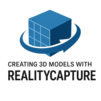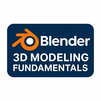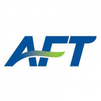
Master the capabilities of AVEVA’s powerful engineering software suite with this comprehensive AVEVA Global Training Course. Tailored for professionals in plant design, instrumentation, and project engineering, the course covers AVEVA E3D, Engineering, Electrical, and Instrumentation modules. Participants will learn intelligent 3D modeling, data integration, catalog/spec management, and collaborative workflows essential for complex industrial projects. Through real-world simulations and expert-led sessions, this training enables seamless coordination across disciplines, improved project accuracy, and efficient lifecycle management in global EPC and owner-operator environments.
AVEVA Global Training Interview Questions Answers - For Intermediate
1. How does AVEVA E3D support intelligent design, and what does ‘intelligent objects’ mean?
AVEVA E3D supports intelligent design by allowing the use of smart objects that contain embedded metadata, such as dimensions, material, component type, and connectivity. These intelligent objects interact with each other and the design environment based on predefined rules, enabling automation, reducing errors, and ensuring consistency. For instance, when a pipe is connected to a valve, both objects recognize their relationship and adjust accordingly during design modifications.
2. What is the role of a 'Draft' module in AVEVA E3D?
The Draft module in AVEVA E3D is used to create and manage 2D drawings extracted from the 3D model. It enables the generation of general arrangement drawings, isometrics, and detailed views with automated annotations. Draft ensures that any changes made to the 3D model are automatically reflected in the 2D drawings, maintaining accuracy and saving significant drafting time.
3. Explain the importance of the 'Admin module' in AVEVA software.
The Admin module in AVEVA software is crucial for project setup and configuration. It allows administrators to define user access levels, manage project databases, control data consistency rules, and configure naming conventions. Proper use of the Admin module ensures security, standardization, and effective control across all stages of the engineering workflow.
4. What is the function of the 'Paragon' module in AVEVA?
Paragon is used for defining and editing piping component geometry and behavior within AVEVA. It allows engineers to create custom components or modify existing ones for inclusion in catalogs. Paragon-generated components can then be used in SPECON to build specifications, ensuring that custom or project-specific components are integrated correctly into the design environment.
5. What is SPECON, and how is it used in AVEVA?
SPECON is the specification module in AVEVA used to build and manage piping specifications based on the components defined in Paragon. It filters catalog data to create a list of permitted components for each service or material class, which designers then use during modeling. This approach enforces standardization and quality control in project execution.
6. How does AVEVA E3D help in reducing construction rework?
AVEVA E3D minimizes construction rework through accurate modeling, clash detection, and integration of as-built data via laser scans. Real-time collaboration and intelligent objects ensure early error detection and resolution. This proactive design validation significantly reduces the chances of discrepancies between the design and actual construction, saving both time and cost.
7. What is the significance of the ‘Structure’ module in AVEVA E3D?
The Structure module in AVEVA E3D allows for the creation of structural elements like beams, columns, platforms, and stairs. It supports intelligent connections, steel detailing, and compliance with industry standards. By modeling the structural framework accurately, it provides a solid foundation for integrating piping and equipment, ensuring better coordination and reduced interference.
8. Describe the use of filters and queries in AVEVA Engineering.
Filters and queries in AVEVA Engineering are used to quickly search, sort, and retrieve specific sets of data from large datasets. Engineers can apply filters to focus on particular components, tags, or properties. This helps in managing large volumes of engineering information effectively, especially during audits, reporting, or data review.
9. What is a 'Zone' in AVEVA E3D, and how is it used?
A Zone in AVEVA E3D is a logical partition of the project model, usually defined by geographical or functional boundaries. Zones help manage large projects by allowing teams to work concurrently on different parts of the plant. They also improve performance by enabling users to load only the relevant parts of the model into memory.
10. How does AVEVA handle revisions and version control?
AVEVA software incorporates robust revision and version control mechanisms. Users can track changes to items, drawings, and documents, and revert to previous versions if needed. Controlled workflows ensure that only approved revisions are released for construction, and all changes are logged, ensuring traceability and auditability.
11. How does AVEVA support import/export of data with other platforms?
AVEVA supports interoperability through standard data formats like IFC, XML, and DWG. Engineers can import data from external tools such as AutoCAD or export models and drawings to other platforms for review or fabrication. This facilitates smooth integration with procurement, construction, and other downstream systems.
12. What is ‘clash management’ and how does it improve productivity?
Clash management in AVEVA E3D involves identifying and managing clashes between modeled elements, such as pipes intersecting beams. The software provides automated clash detection and allows users to assign, track, and resolve these issues within the design environment. This leads to early problem resolution, minimizing on-site conflicts and costly delays.
13. Explain the concept of hierarchy in AVEVA projects.
AVEVA projects are structured in a hierarchical model, typically starting from the site level, followed by areas, zones, systems, equipment, and sub-components. This hierarchy mirrors the real-world structure of plants and ensures logical organization, simplifying navigation, data management, and reporting.
14. What is the function of Equipment module in AVEVA E3D?
The Equipment module is used to model various types of mechanical equipment such as pumps, compressors, tanks, and vessels. It provides parametric and customizable tools to create detailed and accurate 3D representations, which are then used for spatial planning, connectivity, and clash detection.
15. What strategies would you suggest for transitioning from PDMS to AVEVA E3D?
To transition from PDMS to E3D, organizations should start with a pilot project, train the team on E3D’s modern interface and new features, and ensure data compatibility through AVEVA’s migration tools. Maintaining project naming conventions, catalogs, and specifications during the transition is key. A phased rollout and support from experienced E3D professionals will ensure minimal disruption.
AVEVA Global Training Interview Questions Answers - For Advanced
1. What is the role of “Design Templates” in AVEVA E3D, and how do they ensure project standardization?
Design Templates in AVEVA E3D are pre-defined modeling elements that encapsulate standard geometry, naming conventions, attributes, and rule sets for repetitive components or assemblies. These templates may include pipe racks, valve assemblies, structural frames, or equipment modules. By embedding company or project standards into templates, AVEVA ensures that all designers follow a consistent approach, reducing design rework and improving overall project quality. They are especially useful in projects with multiple designers or subcontractors, as templates ensure alignment with client specifications. In addition, using templates significantly reduces design time and enhances compliance with regional or industry standards.
2. How does AVEVA’s clash management system integrate with project approval workflows?
AVEVA’s clash management system not only detects physical interferences between design elements (like piping, structures, and equipment) but also integrates with review workflows. Once a clash is detected, it can be categorized (e.g., hard clash, soft clash, or clearance issue), assigned a priority level, and logged into the system for resolution. Clash reports are automatically generated and linked to model elements, enabling efficient tracking. Integration with workflows means these clashes can be routed through approval chains—designers, reviewers, discipline leads, and project managers—to resolve before final approvals. This prevents downstream delays and allows for real-time communication and resolution within the digital model environment.
3. Explain how AVEVA Engineering supports concurrent engineering in multi-disciplinary projects.
AVEVA Engineering enables concurrent engineering by allowing multiple disciplines to work on shared datasets without overwriting each other’s work. It achieves this through a centralized project database with user roles, access rights, and object-level locking. Engineers can work on mechanical, electrical, instrumentation, and process items simultaneously, with real-time updates ensuring data coherence. Moreover, AVEVA Engineering supports custom workflows, versioning, and audit trails, which enable different departments to track changes and approvals independently. This parallel design capability is vital for large-scale EPC projects where time-to-deliver is critical and cross-functional collaboration is constant.
4. How can the AVEVA E3D ‘Hangers and Supports’ module improve construction planning and field execution?
The Hangers and Supports module in AVEVA E3D enables designers to accurately place and define pipe supports, brackets, and hangers according to industry standards and project requirements. These supports are not just geometric entities—they’re intelligent components with load, material, and fabrication data. By modeling supports during the design phase, AVEVA helps engineers ensure structural stability, reduce vibration, and prevent pipe sagging. Accurate placement of supports also ensures field teams can fabricate and install components without improvisation. Since supports are connected to the 3D model, they reflect in isometrics, BOMs, and fabrication drawings, streamlining procurement and field execution.
5. How does AVEVA Instrumentation integrate with control systems and PLCs for a complete loop design?
AVEVA Instrumentation supports loop design from the field device to the control system or PLC. Users can define instrumentation loops, assign I/O addresses, and map them to control system tags. The software allows configuration of signal types (analog, digital), wiring paths, and junction box connections. It can also interface with external control system databases using XML or OPC-based exports/imports, making it possible to generate DCS-ready configuration files. This integration ensures that loop diagrams, termination schedules, and control system programming are synchronized. It minimizes data entry duplication and facilitates commissioning by providing complete, verified loop documentation.
6. What is the significance of data integrity and validation in AVEVA software, and how is it enforced?
Data integrity in AVEVA is critical due to the interconnected nature of the design data across disciplines. AVEVA enforces integrity through constraint checks, rule-based modeling, and user permissions. For example, a pipe cannot be routed through a beam or overlap an equipment envelope without triggering a clash or warning. Fields like tag numbers, specs, and catalog references must adhere to predefined formats and validation rules. Validation can be performed manually or automatically via batch scripts and macros. Engineering managers often set up dashboards that track validation status, highlighting any inconsistencies before approval or export. This ensures accurate deliverables and supports regulatory compliance.
7. Discuss the use of parametric modeling in AVEVA E3D and its advantages in design modification.
Parametric modeling in AVEVA E3D allows users to define models based on parameters like length, diameter, thickness, or material class. Instead of manually editing every instance of an object, a change in a parameter will automatically update all linked instances. This is extremely useful in repetitive layouts like pipe racks, HVAC ducts, or structural platforms. Parametric models can be saved as templates or macros for reuse across projects. The main advantages include consistency, reduced design time, easy adaptation to changing requirements, and elimination of human error during revisions. It also aids in design optimization by allowing scenario-based changes and impact assessments.
8. How does AVEVA help with regulatory documentation and audit readiness for industries like pharmaceuticals or nuclear energy?
AVEVA offers traceability, version control, and data validation tools critical for highly regulated industries. In pharmaceuticals and nuclear energy, documentation must adhere to GMP, GAMP, or NRC standards. AVEVA Engineering and Instrumentation modules allow tagging of equipment and instruments with certification data, revision history, and approval stamps. Document management features track who made changes, when, and why. Integration with AVEVA NET or third-party document control systems allows for seamless compilation of audit-ready packages. Features like electronic sign-offs, PDF batch printing, and automated logs help ensure that every design decision and change is recorded and accessible, fulfilling compliance and audit requirements.
9. Explain the benefits of using AVEVA’s 4D simulation and how it links design to construction sequencing.
AVEVA’s 4D simulation capabilities combine the 3D model with the project schedule to visually simulate construction activities over time. This helps planners and project managers validate the construction sequence, identify clashes in time and space, and optimize labor deployment. For example, structural erection, piping installation, and equipment placement can be coordinated to avoid congestion or resource conflicts. It also supports digital rehearsals for high-risk activities. Integration with scheduling tools like Primavera P6 or MS Project allows for automatic updates. This visualization increases stakeholder engagement, reduces rework, and improves safety by identifying potential hazards before site mobilization.
10. What strategies can be used for optimizing document control and transmittal using AVEVA tools?
AVEVA facilitates document control through metadata tagging, status management, and document hierarchy. Strategies include defining document templates, assigning lifecycle stages (draft, reviewed, approved), and automating transmittals via integrated workflows. AVEVA NET or integrated DMS systems can track who accessed what, when, and which version was sent. Document packages can be created for vendors, construction teams, or clients, each with specific access rights. Automated generation of document registers, compliance logs, and cover sheets improves tracking and reduces manual overhead. This ensures consistency, traceability, and version integrity in large engineering documentation environments.
11. How does AVEVA support modular construction and prefabrication in industrial projects?
AVEVA supports modularization by allowing the design to be segmented into logical, transportable modules with defined boundaries, connections, and interfaces. Designers can create self-contained units like skid packages, electrical rooms, or piping spools. These modules are designed with lifting points, weight limits, and fabrication tolerances in mind. AVEVA’s clash detection, assembly modeling, and interface management ensure modules fit together correctly on site. Bill of Materials, assembly drawings, and fabrication isometrics can be generated directly from each module, supporting offsite construction. This approach shortens on-site construction timelines, reduces labor risk, and supports just-in-time delivery.
12. Describe how AVEVA supports integration with Building Information Modeling (BIM) standards.
AVEVA supports BIM workflows through the use of Industry Foundation Classes (IFC), enabling data exchange with architectural and civil tools like Revit, Tekla, and Navisworks. AVEVA models can be exported to IFC or read BIM data directly for design coordination. This supports cross-discipline collaboration in infrastructure and industrial projects where civil-structural integration is critical. BIM compatibility enhances coordination between MEP, piping, structural, and architectural teams, reducing rework during handover or construction. It also aligns with ISO 19650 standards for digital asset delivery and lifecycle management in capital projects.
13. How does AVEVA assist in managing engineering change orders (ECOs) across the design lifecycle?
AVEVA provides tools to manage ECOs by tracking revisions, enabling controlled modifications, and linking changes to relevant objects and documentation. Change requests can be initiated within AVEVA Engineering, tagged with impact zones, affected disciplines, and priority levels. Upon approval, assigned users implement the changes, which are tracked through audit logs. Model changes in E3D are reflected in drawings, BOMs, and associated documents. AVEVA’s revision control ensures that only the latest approved data is visible to downstream users, avoiding miscommunication. This structured approach enhances visibility, reduces errors, and ensures traceability throughout the design lifecycle.
14. What are the primary security and access control features in enterprise-wide AVEVA deployments?
In enterprise-wide deployments, AVEVA enforces role-based access control (RBAC), allowing administrators to define which users can view, edit, or delete specific objects or documents. Permissions can be set by project, discipline, zone, or object type. Audit trails log all changes, including user ID, timestamp, and action taken. Data encryption, database-level security, and integration with Active Directory or LDAP provide secure authentication. AVEVA Global also supports replication and access control across multiple geographic sites, ensuring sensitive data remains protected while allowing real-time collaboration. These features are vital in large organizations dealing with proprietary, client-confidential, or regulated project data.
15. What is the importance of tagging and object metadata in AVEVA projects?
Tagging and metadata are foundational to AVEVA’s object-centric design philosophy. Every object—be it a valve, cable, equipment, or structural beam—has a unique tag and associated metadata like material, pressure rating, specification, vendor, and maintenance history. This metadata drives intelligent modeling, reporting, procurement, and asset management. Tags link the object to drawings, documents, loop diagrams, and even ERP systems. They enable traceability throughout the design, construction, and operational phases. Accurate tagging supports quick retrieval, impact analysis, and change management. It also plays a crucial role in digital twin development, where metadata informs simulation, analytics, and lifecycle optimization
Course Schedule
| Jan, 2026 | Weekdays | Mon-Fri | Enquire Now |
| Weekend | Sat-Sun | Enquire Now | |
| Feb, 2026 | Weekdays | Mon-Fri | Enquire Now |
| Weekend | Sat-Sun | Enquire Now |
Related Courses
Related Articles
Related Interview
- Collibra Data Governance Training Interview Questions Answers
- SAP Sales and Distribution (SD) Interview Questions Answers
- AWS Certified Cloud Practitioner (AWS Cloud Practitioner) Interview Questions Answers
- Advance Selenium Training Interview Questions Answers
- SAP In-House Cash Training Interview Questions Answers
Related FAQ's
- Instructor-led Live Online Interactive Training
- Project Based Customized Learning
- Fast Track Training Program
- Self-paced learning
- In one-on-one training, you have the flexibility to choose the days, timings, and duration according to your preferences.
- We create a personalized training calendar based on your chosen schedule.
- Complete Live Online Interactive Training of the Course
- After Training Recorded Videos
- Session-wise Learning Material and notes for lifetime
- Practical & Assignments exercises
- Global Course Completion Certificate
- 24x7 after Training Support














 Join our Live Instructor-Led online classes delivered by industry experts
Join our Live Instructor-Led online classes delivered by industry experts